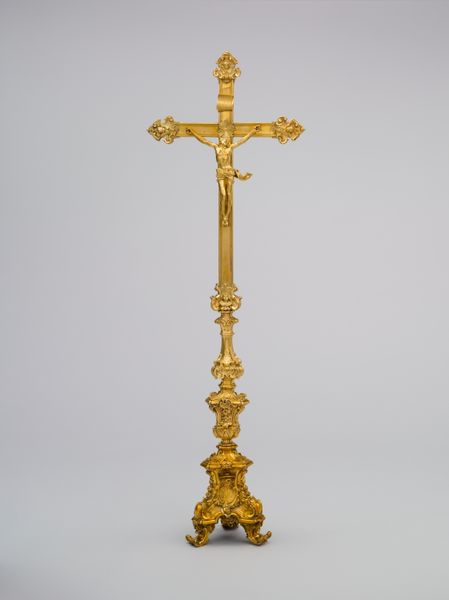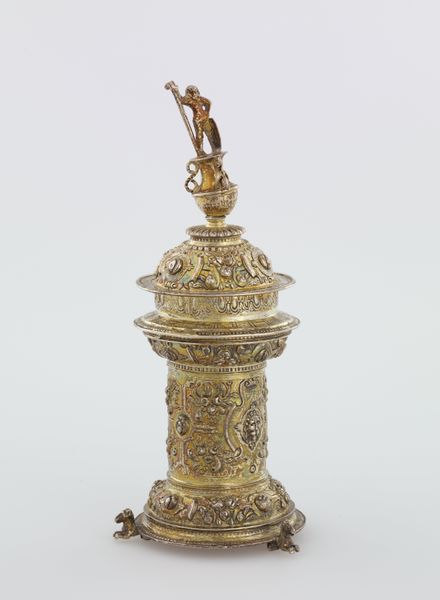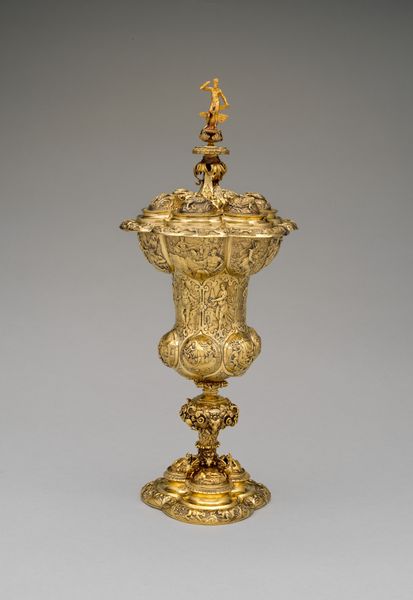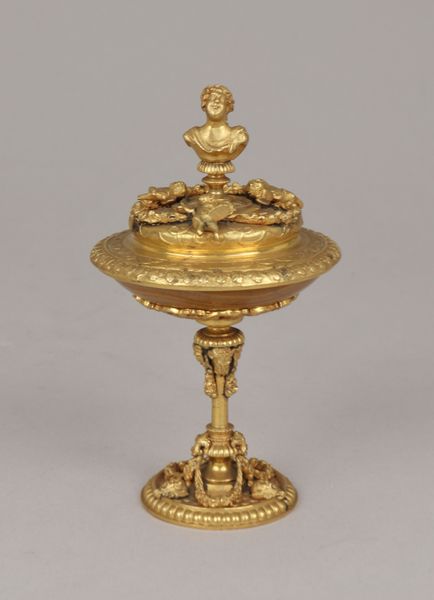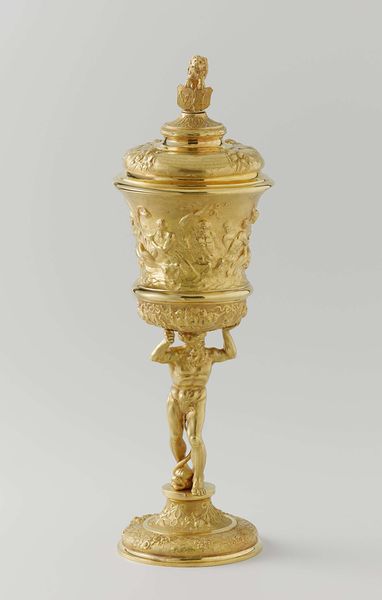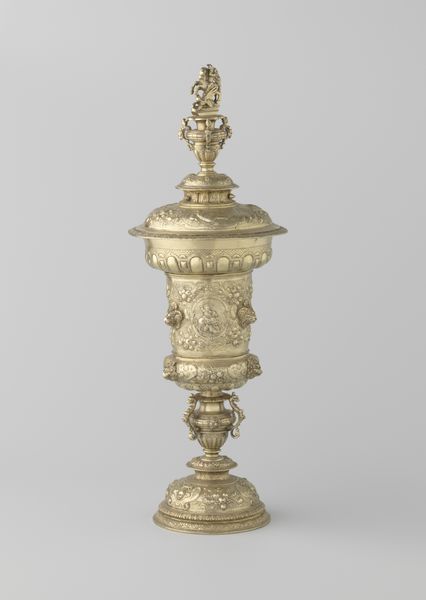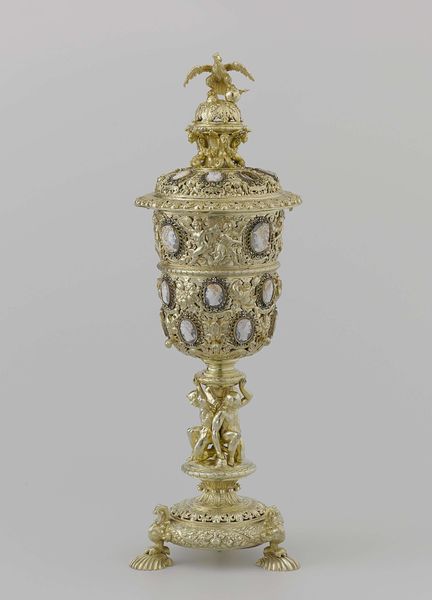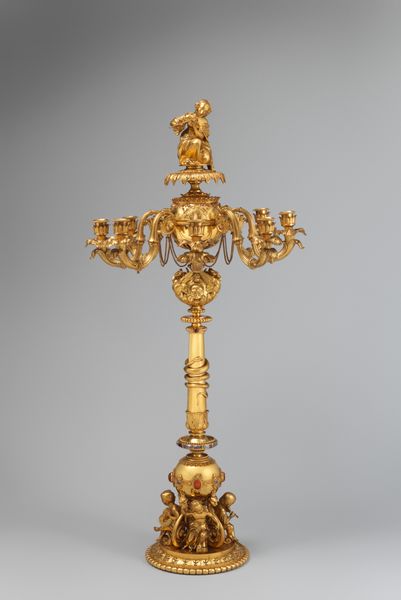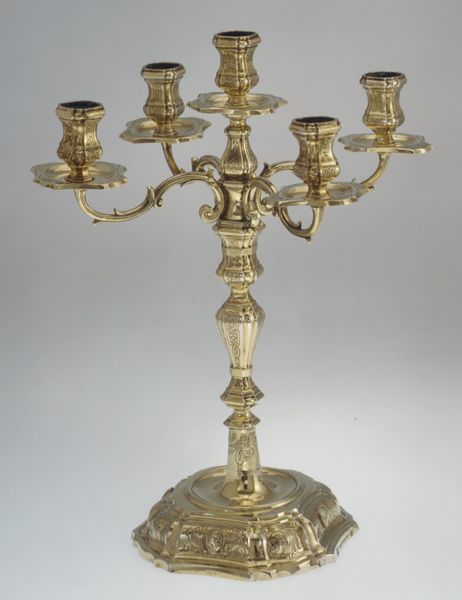
metal, bronze, sculpture
#
metal
#
bronze
#
sculpture
#
decorative-art
#
rococo
Dimensions: 20 1/2 in. (52.1 cm)
Copyright: Public Domain
Editor: Here we have a bronze candlestick, crafted around 1765 or 1766. It’s currently housed here at The Art Institute of Chicago. The sheer opulence is striking, even for a functional object. What sociopolitical dynamics might explain such elaborate ornamentation on a seemingly everyday item? Curator: Well, let’s unpack that "everyday item" label first. Who, exactly, was using candlesticks like this? This isn't about the daily lives of ordinary people. The Rococo style, with its emphasis on ornate detail and asymmetrical forms, was deeply intertwined with aristocratic power and privilege. This candlestick screams wealth. How do we situate an object like this within a period of revolution and the rise of Enlightenment ideals? Editor: So, the excessiveness is almost a deliberate display of class? A way to signal status during a time of potential social upheaval? Curator: Precisely! Think of the pre-revolutionary French court. Art became a tool to visually reinforce the existing power structures. The shimmering bronze, the intricate detailing – all aimed at conveying a sense of grandeur and, frankly, untouchability. Editor: So it's not *just* decorative. Curator: Not at all. It's a declaration. Now, consider the perspective of those excluded from such displays of luxury. How might this object, intended to illuminate the rooms of the elite, cast a shadow on the lives of the impoverished? Can we view it as a symbol of inequality? Editor: That makes me look at the object in an entirely different light, shifting my focus from admiring it to questioning what it truly represents in that specific socio-economic setting. Curator: And that's exactly the kind of critical lens we need to apply. What appears beautiful on the surface can hold much deeper, and sometimes troubling, narratives about power and society. Editor: I appreciate that. I’ll certainly think twice about simply admiring pretty things. Curator: Excellent. Examining those underlying meanings enriches our understanding.
Comments
No comments
Be the first to comment and join the conversation on the ultimate creative platform.
